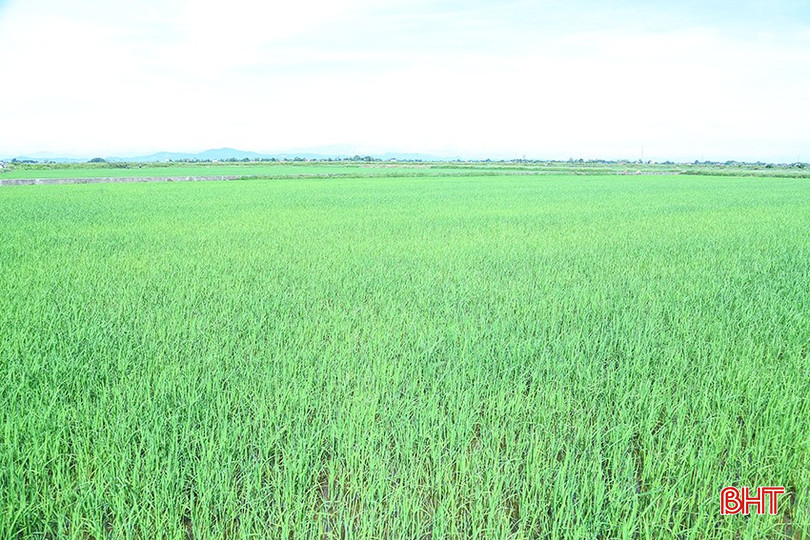
In Ha Tinh city, summer-autumn rice in early-planted areas is entering the tillering stage and growing well. However, small leaf rollers have appeared quite early, with a density much higher than previous years and are widespread in almost all rice fields of many communes such as Thach Tri, Thach Van, Thach Lac, Tuong Son, etc.
Mr. Le Van Tung (Dong Khanh village, Thach Tri commune, Ha Tinh city) said: “I grow 6 sao of rice, mainly Xuan Mai and Khang Dan varieties, which are currently being attacked by small leaf rollers, many fields have had their leaves "eaten" white by the worms. Through observation, this is the most serious rice pest outbreak in the past few years. Following the commune's instructions, I have proactively sprayed pesticides, but I am still very worried because the weather is sunny in the morning and rainy in the afternoon, favorable for 3-4 year old larvae to bite and destroy the young leaves. Maybe, I will have to spray again.”
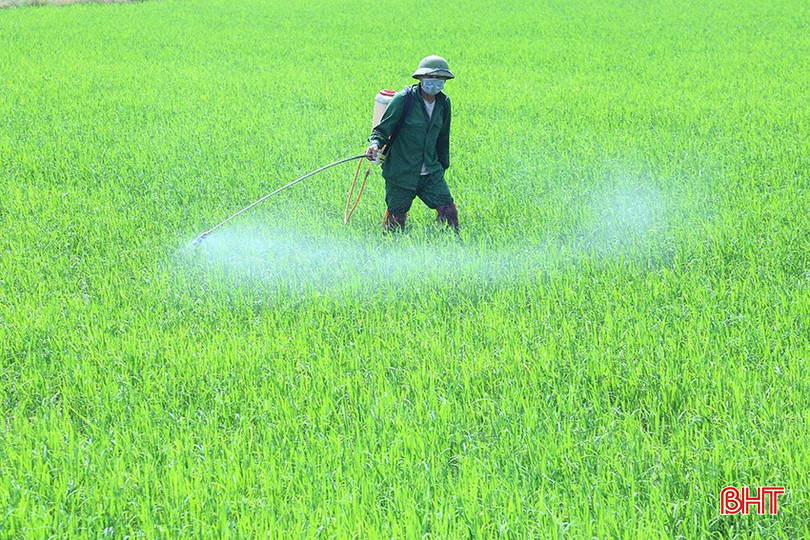
According to Mr. Phan Thanh Nam - an officer of the Center for Application of Science and Technology and Protection of Plants and Livestock in Ha Tinh City, in the locality, the first generation of leaf rollers is mainly at the age of 3 - 4. Some fields recorded high density, from 40 - 50 individuals/m², locally 70 - 100 individuals/m². Hot and humid weather, alternating with showers, is the ideal condition to stimulate the eggs of small leaf rollers to hatch (flowering), favorable for larvae to develop quickly, shortening the reproductive cycle. The professional sector has issued a document recommending localities to inform farmers to pay attention to monitoring and handling promptly to reduce pressure on the fields for the next generation of worms.
In Lam Trung Thuy commune (Duc Tho), the first generation of small leaf rollers is mainly appearing at the age of 2-4, with overlapping generations between fields, making control more complicated. According to the leader of Lam Trung Thuy commune People's Committee, the second generation of larvae will begin to bloom from around July 5, causing severe damage at the stage of late tillering and panicle differentiation. The commune government has issued a notice, advising people to proactively visit the fields regularly, check the rice area to promptly detect and handle spraying at the right time.
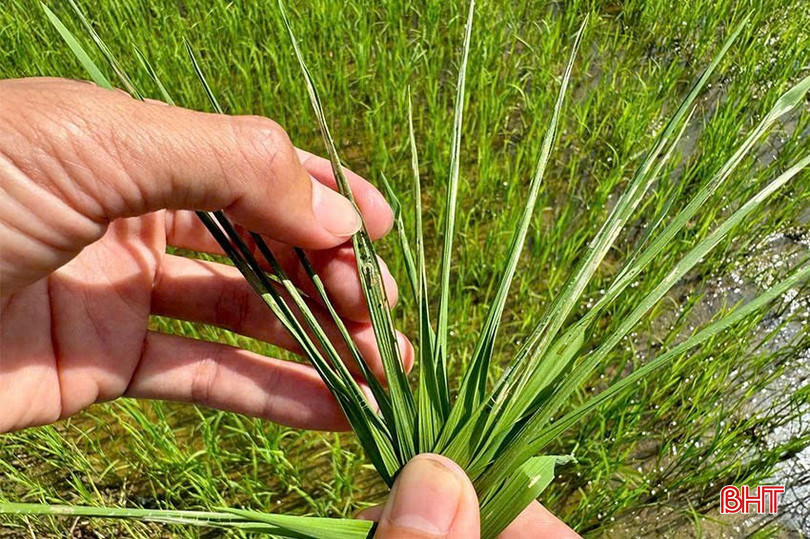
It is known that the small leaf roller has a long life cycle. If not treated at the right time, it will greatly affect the growth process and rice yield later. Usually, the areas with heavier infestations are concentrated in low-lying areas, early-planted fields, and rice fields with excess nitrogen. Correctly assessing the situation and effectively treating larvae from now on in each locality's rice fields will determine the level of emergence and damage caused by the next generations of larvae.
According to information from the provincial Department of Crop Production and Livestock, currently, small leaf rollers have appeared in some localities such as Duc Tho, Cam Xuyen, Can Loc, Thach Ha districts, Ha Tinh city... Average density is 10 - 15 individuals/m 2 , high places 20 - 30 individuals/m 2 , locally 70 - 100 individuals/m 2 , the main developmental stage is 3rd and 4th instars and there is intermingling of generations, infected area is 520 hectares, heavily infected 15 hectares.
In addition, through monitoring, the alternating sunny and rainy weather patterns cause brown planthoppers and white-backed planthoppers to arise and cause damage. Currently, the average density is 300 - 500 individuals/m 2 , in high places 700 - 1,000 individuals/m 2 , locally 3,000 - 5,000 individuals/m 2 , the infected area is 15 hectares, heavily infected 3 hectares. Mainly adult planthoppers, age 1, age 2, distributed in some early planting areas in the communes of the coastal areas of Thach Ha district, Cam Xuyen coast, areas outside Duc Tho dike, ...
Mr. Nguyen Van Hinh (Trung Dong village, Cam Duong commune, Cam Xuyen) shared: “I grow more than 5 sao of rice, sowing early so the planthoppers appear quite densely. The rice is in the stage of strong leaf and stem development, but this species attacks, sucks sap, turns leaves yellow, and reduces tillering. I have to visit the fields regularly to monitor the density and spray pesticides in time. This time, the weather often has sudden thunderstorms, which also significantly reduces the effectiveness of the pesticides.”

Golden apple snails also appeared in large numbers, biting down young rice, causing headaches for many farmers. According to reports, golden apple snails appeared many times higher than in other years, especially in low-lying fields and newly planted fields. Snails ate the young rice, forcing farmers to replant many times, costing more effort and money. Ms. Tran Thi Phuong (Van Cu village, Xuan Loc commune, Can Loc) shared: "We just had to replant 4 sao due to heavy rain from June 12-13. When the rice was just starting to grow, the golden apple snails caused heavy damage. Although we often stuck to the fields to catch them manually, when there was a thunderstorm in the late afternoon, the snails crawled out in large numbers overnight."
According to the forecast of the Ha Tinh Hydrometeorological Station, the weather from now until the end of June will continue to be hot and sunny, with intermittent showers, and an average temperature of 28 - 35°C. This creates favorable conditions for leaf rollers, brown planthoppers, white-backed planthoppers, and golden apple snails to arise and cause severe damage. It is expected that the second generation of leaf rollers will bloom from about July 5 onwards; brown planthoppers and white-backed planthoppers will continue to accumulate, multiply in number, and will cause severe damage during the rice heading and flowering stages; golden apple snails are likely to continue to arise.
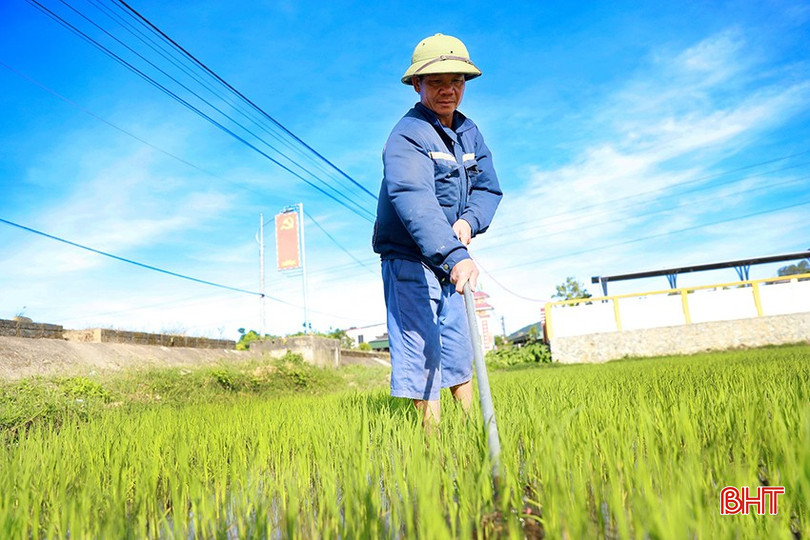
To proactively prevent and limit damage caused by pests and diseases, the Department of Agriculture and Environment of Ha Tinh province requires the People's Committees of districts, cities and towns to coordinate with irrigation companies in the area to regulate water regimes appropriately, ensure adequate water supply for rice growth and development, and closely monitor the situation to fertilize the tillering stage.
At the same time, direct specialized departments, centers for application of science and technology and protection of crops and livestock and People's Committees of communes, wards and towns to assign staff to focus on monitoring fields and carry out investigation and detection work well. Based on the specific conditions of each locality, determine the area that needs prevention and control; notify production households to raise the spirit of proactively sticking to the fields, monitoring and handling pests.
For leaf rollers: regularly check and monitor fields, conduct good investigation and detection work, based on the specific conditions of each locality to accurately determine the time when the second generation of larvae hatches, the density of harmful worms to decide the time and area to focus on treatment, use one of the drugs with active ingredients Indoxacarb, Emamectin benzoate, Chlorantraniliprole... Popular commercial drugs such as Clever 150SC, Obaone 95WG,...
For brown planthoppers and white-backed planthoppers : focus on treating the areas where planthoppers have appeared to limit the source of dispersal and spread in the fields; regularly monitor the fields, carry out investigation and detection well, focusing on low-lying areas and areas where planthoppers often cause damage every year. Proactively warn and guide localities and farmers to spray promptly when planthoppers are in the 1st and 2nd instars with one of the chemical pesticides containing the active ingredients Pymetrozine, Imidacloprid, Clothianidin, Acetamiprid... Popular commercial pesticides include ChessÒ 50WG, Sutin 50SC, Dantotsu 50WG,...
For golden apple snails: catch and collect egg nests, use baits such as sweet potato vines, papaya leaves combined with drainage ditches to attract snails and collect and destroy. High density fields are treated with chemicals containing the following active ingredients: Metaldehyde, Niclosamide,... Some popular commercial drugs such as StarPumper 800WP, Anhead 12GR, Boxer 15GR,...
Source: https://baohatinh.vn/nang-mua-that-thuong-nong-dan-lo-phong-sau-benh-tan-cong-lua-he-thu-post290491.html










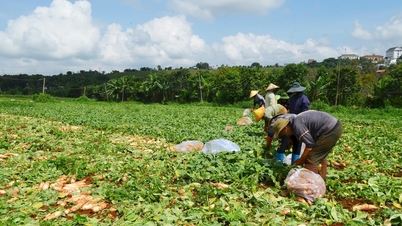









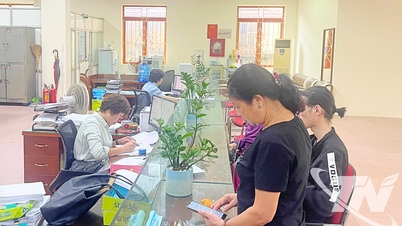



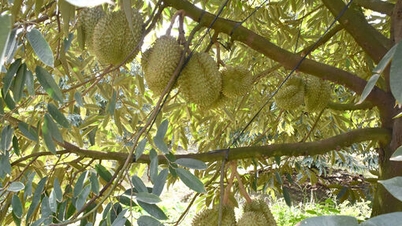

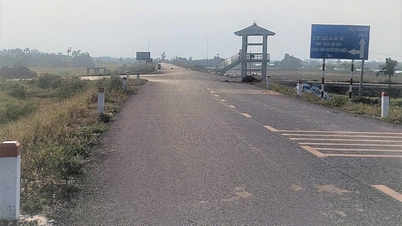




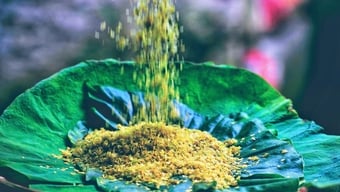

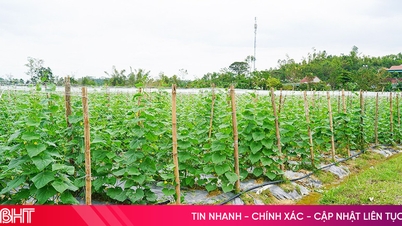

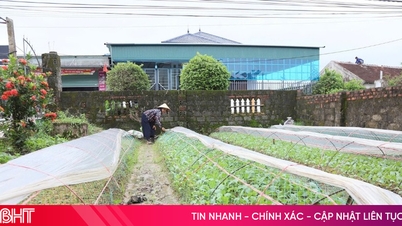














































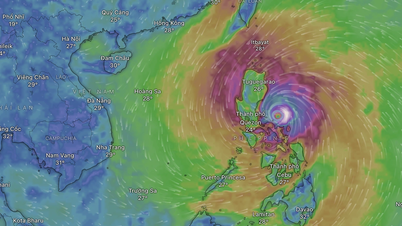








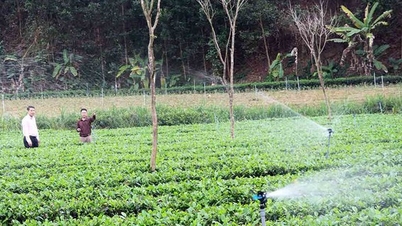










![Dong Nai OCOP transition: [Part 2] Opening new distribution channel](https://vphoto.vietnam.vn/thumb/402x226/vietnam/resource/IMAGE/2025/11/09/1762655780766_4613-anh-1_20240803100041-nongnghiep-154608.jpeg)













Comment (0)